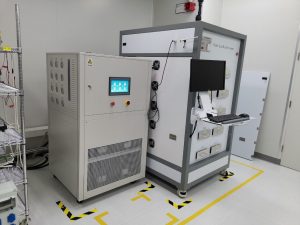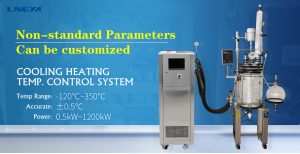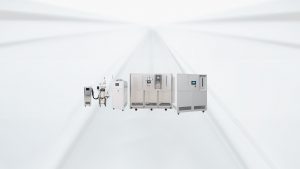Cooling and heating of the reactor and the principle of use
Cooling and heating circulator thermostats are commonly used with glass reactors for biochemical instruments. They are widely used in modern fine chemicals, biopharmaceuticals, scientific research and experiment industries. They can be concentrated, distilled, Will stay, separate and purify the reaction. In the production process, whether it is a double-layer glass reactor or a single-layer glass reactor, the refrigeration heating temperature control system can generally complete high temperature, low temperature, and vacuum reaction experiments at the same time. Under constant temperature conditions, in a closed container, the refrigerating and heating circulator can be combined with a glass reactor to carry out stirring and reaction under normal or negative pressure, and can control the evaporation and reflux of the reaction solution.
One of the methods of obtaining high temperature is steam heating. When the cooling and heating temperature control system is matched with the glass reactor, the heating temperature is required to be below 100°C, and the glass reactor can be heated by steam. In this method, the equipment is heated with subatmospheric steam. When the temperature is required to be in the range of 100°C to 180°C, saturated steam can be used; when the temperature is required to be higher, high-pressure superheated steam can be used for heating.
Different manufacturers’ isolation reactor heating circulators are designed with different temperature ranges and media. It is necessary to select the appropriate media according to the available media of the equipment. Common media include water, oil, refrigerant, etc. The cooling process of the equipment is to use the refrigerant to absorb the excessive heat of the equipment and evaporate it to achieve the purpose of temperature difference.
The principle of temperature control of the matching reactor is indirect temperature control. The temperature is controlled by the heat transfer oil or other medium in the jacket of the reactor and the coil, and the temperature of the reactor wall is raised and lowered through the medium.
Our LNEYA heating circulator can set the working temperature and alarm temperature on the equipment digital display, press the heating option, after the indicator light is on, you can adjust its heating power through power selection; when using heat transfer oil, it is recommended to directly contact the equipment The manufacturer purchases the corresponding heat transfer oil. When using it, the heat transfer medium cannot contain water, otherwise it will cause equipment failure.
Recomendaciones relacionadas
-
Ways to make ultra-low temperature circulating chillers more energy-efficient
1257In modern times, environmental protectionand energy saving is the development theme, so is the industrial chiller. Then,how to improve your industrial chiller to be more energy conservation? First, to prevent and reduce the pipescaling of ult...
Ver detalles -
What are the main equipment needed for industrial chillers?
1384Main equipment of industrial chiller: compressor, condenser, expansion valve, evaporator, chilled water pump, cooling water pump cooling tower (water cooling) Selection: know the required inlet and outlet water temperature, the required cooling ca...
Ver detalles -
Model and size selection of cooling and heating circulator (pilot plant temperature control system)
1713The cooling and heating circulator adopts mechanical refrigeration, the low-temperature heating tube heats the high temperature, and the canned pump is used as the circulating pump. The liquid circulation of the whole system is closed and consists...
Ver detalles -
Forma de configuración de la unidad de calefacción por circulación para laboratorio
1534El modelo estándar de la unidad de calefacción de circulación para el laboratorio LNEYA es: SUNDI, el rango de temperatura es de temperatura ambiente a menos 120 grados Celsius, y la capacidad se puede dividir en 5L, 10L, 20L, 30L, 40L, 50L, 80L, 100L, mayor cap...
Ver detalles
 LNEYA Enfriadoras industriales Fabricante Proveedor
LNEYA Enfriadoras industriales Fabricante Proveedor














